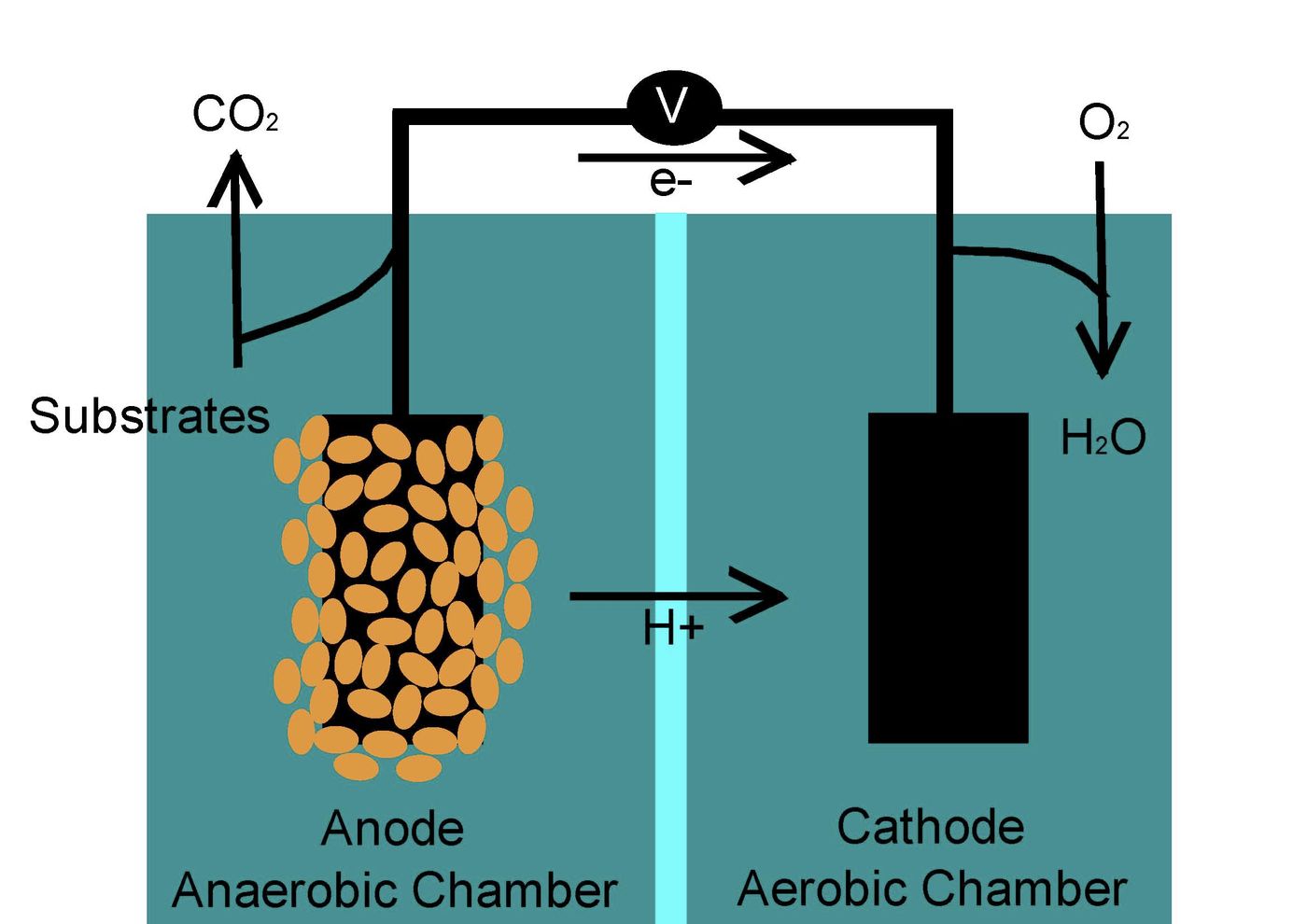Turning methane into electricity with bacteria
Methane is approximately 30 times more potent than carbon dioxide, which means that it has a big part in climate change. If we are able to harness methane to be converted into electricity, we may be able actually utilize this harmful greenhouse gas for good. A team of researchers has figured out how to do this process using a microbial fuel cell, and their work was recently published in Nature Communications. Watch the video below to learn how to make your own microbial fuel cell.
Typical methods of methane transportation are risky because leaks from pipes into the atmosphere are common; for this reason, a direct conversion process of methane into electricity that can be instigated near drilling sites is needed.
"Currently, we have to ship methane via pipelines," said Thomas K. Wood, holder of the biotechnology endowed chair and professor of chemical engineering, Penn State. "When you ship methane, you release a greenhouse gas. We can't eliminate all the leakage, but we could cut it in half if we didn't ship it via pipe long distances."
To make the process less leak-prone, the scientists want to develop microbial fuel cells that convert methane into electricity near the wellheads themselves. Microbial fuel cells convert chemical energy to electrical energy using microorganisms, and while that idea is not new, using methane to power a microbial fuel cell is a relatively novel idea. "People have tried for decades to directly convert methane," said Wood. "But they haven't been able to do it with microbial fuel cells. We've engineered a strain of bacteria that can."
The problem until has been that it is difficult to find bacteria that consume methane, as most of them live in the deep sea. But the researchers have found a solution. "We know of a bacterium that can produce an energy enzyme that grabs methane," said Wood. "We can't grow them in captivity, but we looked at the DNA and found something from the bottom of the Black Sea and synthesized it."
As the study explains the team produced a synthetic consortium of bacteria made of “(i) an engineered archaeal strain to produce methyl-coenzyme M reductase from unculturable anaerobic methanotrophs for capturing methane and secreting acetate; (ii) micro-organisms from methane-acclimated sludge (including Paracoccus denitrificans) to facilitate electron transfer by providing electron shuttles (confirmed by replacing the sludge with humic acids), and (iii) Geobacter sulfurreducens to produce electrons from acetate, to create a microbial fuel cell that converts methane directly into significant electrical current.” Each bacterium in the sludge performs its own specific role in the generation of electricity.
Unfortunately, bringing the microbial fuel cell into viable terms for the industrial scale is still ways away. Compared to other fuel cells, such as methanol for example, the cell produces about 1,000 times less electricity.
Sources: Science Daily, Nature Communications









